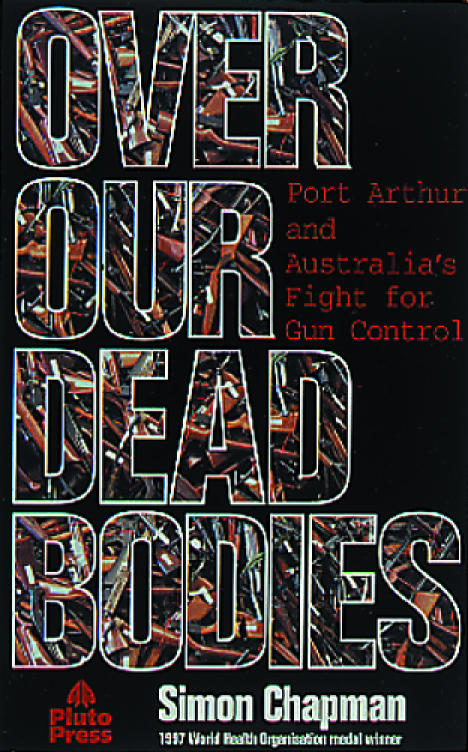Simon Chapman
Pluto Press, $A24.95, pp 218 
ISBN 1 86403 037 2
———————
Rating: ★★★
On Sunday 28 April 1996, 23 year old Martin Bryant entered a tourist complex 100 km south of Hobart, Tasmania, and shot dead 35 people, wounding 18 others. The media described it as “the worst massacre by a single gunman in Australian history,” although Chapman points out on page 1 that the wholesale slaughter of aborigines in the 19th century often involved far higher individual tallies.
Before this watershed tragedy, Australia’s eight states and territories had different laws. In practice, they operated on or below the lowest denominator (ironically, that of Tasmania). For years, attempts to limit gun ownership had floundered in political backwaters, fobbed off by politicians cowed by vocal pro-gun lobbyists. After the massacre, obfuscation was cut through and a practical national gun agreement put in place. This included a ban on semiautomatic and pump action rifles, a compensatory buy back scheme, a register of all firearms, shooter licensing based on a “genuine reason for owning a firearm,” safe storage requirements, and uniform national laws.
Myths surrounding gun control abound. “Guns don’t kill people, people do” has had a successful run in the United States, but the Australian public simply did not buy this argument. I cheered when the epidemiological arsenal of sensitivity, specificity, and power was used to knock the stuffing out of arguments for a prohibited persons register; to prevent 570 assaults yet miss 30 each year in New Zealand alone would entail locking up 150 000 Kiwis.
Chapman sticks to his area of expertise and writes knowledgeably and well. He lays bare the bones of advocacy on both sides of the gun control debate and shows that understanding the opposition and getting the facts right are key to any public health change. If he ever wants a new career he could star as a general; until then I am glad he is wearing the white hat. Three years on, there have been no further Australian massacres (the previous average was one a year), and the core of the agreement remains intact. Japan, Britain, Canada, and Australia lead the world in gun control, while the United States lags a long way behind.
This book is really about the workings of the media, the use of lobbying, and the skills of advocacy. So pick a day when you are tired of dealing with the aftermath of ignored public health issues and read this ripping yarn, arm yourself with the tools it offers, and be ready to go into battle.
Footnotes
Pluto Press can be contacted at its website (203.4.212.185/pluto/).


